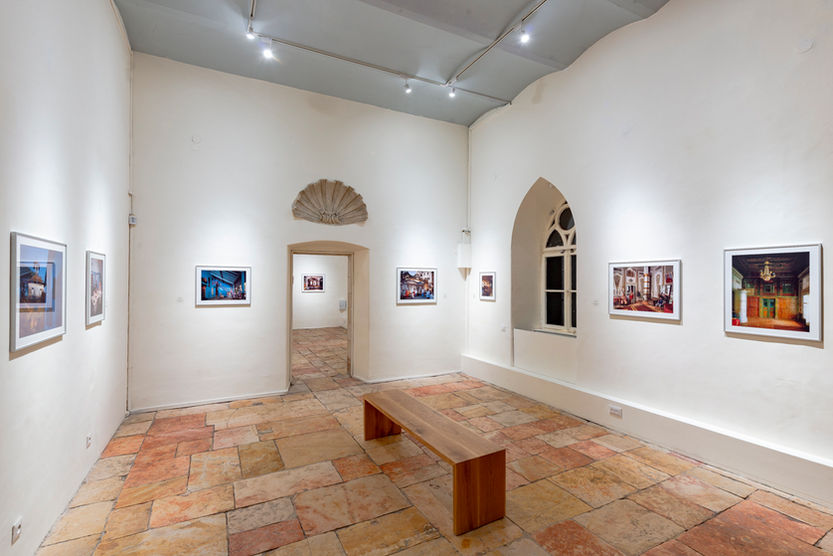
The exhibition Light of the World presents photographs of synagogues taken by international photographer Neil Folberg. Thirty years ago, Folberg set out to photograph and document Jewish communities around the world. On his journey, he visited both well-known places and ones that were lesser known but equally important and interesting. Some of the Jewish communities he documented no longer exist; others are still active and vital. His photographs document the Jewish heritage of these communities and preserve their memory. They show the influence of local customs and culture on Jewish communal life as well as on the architectural and artistic choices in the design of these communities’ synagogues. Revealed in the photographs of these houses of prayer is not only the physical beauty of the structures but also the story of the resilience of the communities they served. Alongside integration into the fabric of the surrounding culture, they preserve a thousand-year-old heritage of shared history and common belief.
Most of the photographs in the exhibition were printed using the evercolor technique, which is no longer in use. These photographs are among the last to be printed using it. The technique involves printing with carbon pigment in four layers of color that are precisely placed one on top of the other, resulting in the photograph’s unusual vibrancy. In addition, Folberg’s photographic choices—long exposures, sensitive use of light and surroundings and carefully thought-out compositions—allow the viewer to distinguish and sense the materials in the space, affording a truly tangible experience. Displayed alongside the photographs are items from the museum’s collection, which provide a glimpse into the communities of Italian Jewry and their stories. The combination of media widens the window that has been opened onto the life of Jewish communities around the world.
* * *
Neil Folberg was born in 1950 in San Francisco, California, and he began to engage in the art of photography at a young age. In 1976, he and his wife Anna immigrated to Israel, where they established their home. Folberg created diverse photographic bodies of works in Israel and abroad dealing with natural landscapes, historical buildings and movement. An artist-researcher, his works stretch the boundaries of photography and the laws of nature. His photographs have been exhibited in many museums, galleries and institutions around the world. Light of the World is his first solo exhibition in Israel dedicated to the works from his endeavor to document Jewish communities and their historic synagogues. The name alludes to the symbolic meaning of light in Jewish sources and is consistent with Folberg’s undertaking and the attention he pays to light in his work.
The Book of Esther is an important, unique spiritual and religious asset and an inalienable cultural legacy of the Jewish people. Of the 24 books of the Hebrew Bible, only two are named for women: Ruth and Esther. In The Book of Esther, we uncover the Metamorphosis and heroism story of Esther, who changes her national destiny by being conscious of her religious legacy.
The exhibition presents the interpretations and the variety of possible contexts for reading the Book of Esther, which allows us to feel, even today, with vivid passion and interest, the relevance of this book to our history as a nation and as women.
We have chosen works by artists mostly from Italy and Israel, which interpret the themes and narratives in varieties of manners. The practice of disguise, of hidden identity, was given spiritual significance over the generations, and it characterizes other cultures. Some of the selected works are also our interpretation as curators of the scroll meanings and the symbolism surrounding it. This is done from a feminist, sociological, and historical perspective.
We refer in several works to the motif of concealment that is present in the book, first in that the explicit name of God does not appear in it, and also by the fact Esther is concealing her people and homeland.

%20(6).png)











